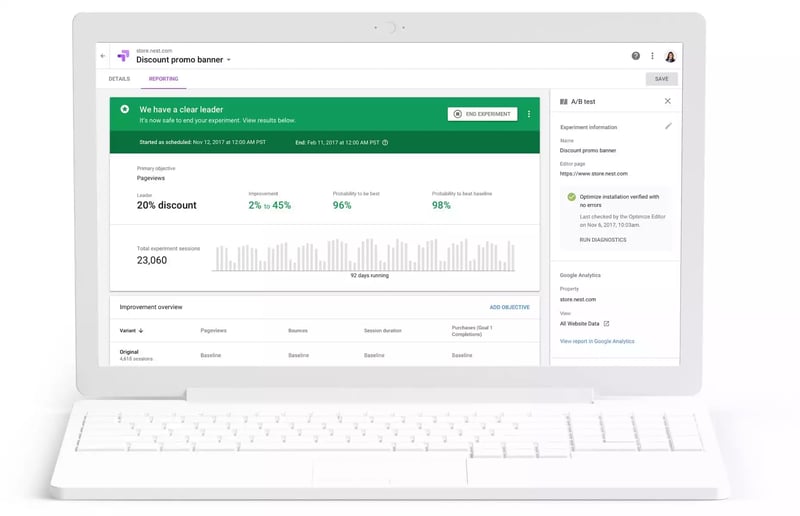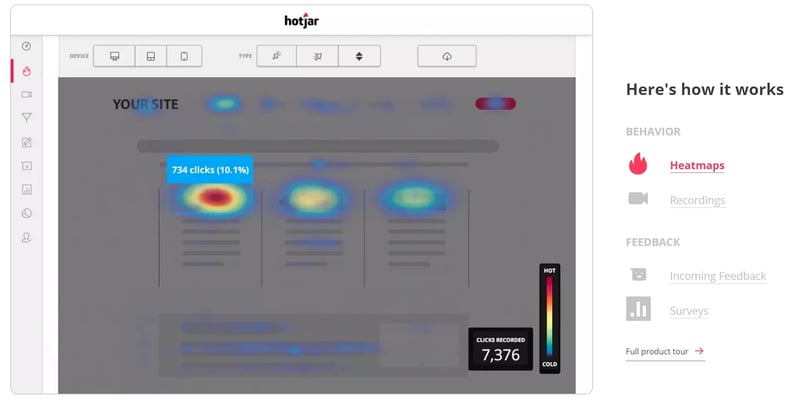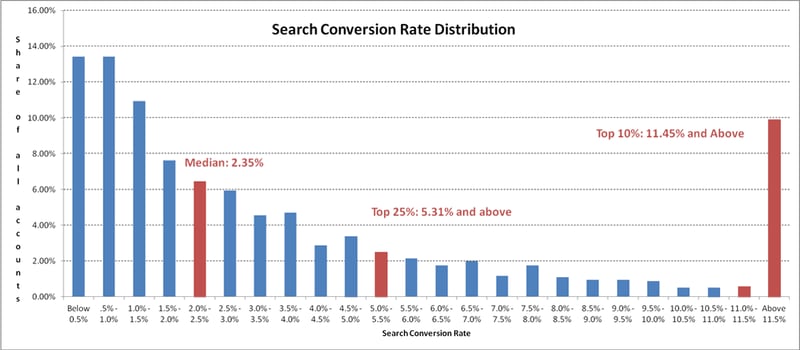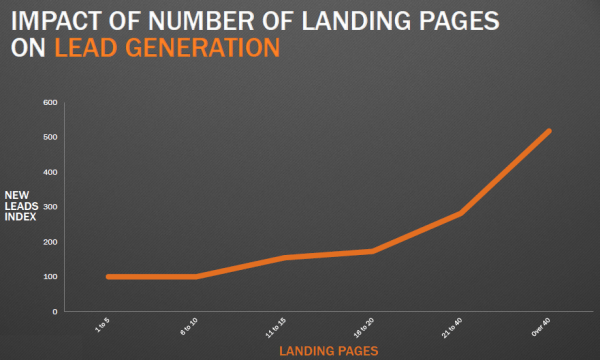The Beginner's Guide to Conversion Rate Optimisation for Healthcare
Discover how a systematic approach to testing all elements of your marketing can improve conversions, generate more leads and close more patients. With Conversion Rate Optimisation, health and wellbeing businesses have a tool that allows them to compete against large competitors with big budgets.
Do you know what separates the top-performing businesses, those who continue to grow month-on-month, and those that are stuck chasing their tail (and their next patient)?
Optimisation.
The ability to do more with what you already have is a key concept all businesses should be familiar with. After all, wouldn’t you rather turn your existing leads into patients, instead of chasing down new prospects?
That’s where Conversion Rate Optimisation comes in. Conversion Rate Optimisation, or CRO, is the process of improving your website (and other digital touchpoints where your patients interact with you) to improve the number of conversions you get.
Want to know how powerful testing can be? In 2007, a little-known Barack Obama managed to raise $60million in campaign donations. And his team achieved this by focusing on CRO and adopting the belief that every website visitor was an opportunity.
Not convinced yet? Consider these incredible statistics that highlight the need to improve your conversion rate:
- Using correct targeting and testing methods can boost conversion rates up to 300%. (Source: Marketing Experiments)
- An experiment by SmartBrief resulted in an 816% increase in conversions (Source: Marketing Experiments)
- Companies that do well at generating leads often convert 50% more patients, and do so at a cost of 33% less than competitors (Source: Demand Gen)
While your goal might not be to generate funds to run a presidential campaign, the theory behind the success can easily be implemented in your business RIGHT NOW so that you too can achieve these kinds of results for your business.
What's In This Guide?
Section 1 - Introduction to Conversion Rate Optimisation
Section 2 - Conversion Rate Optimisation in Action
Section 3 - The Conversion Rate Optimisation Process
Introduction to Conversion Rate Optimisation
What is Conversion Rate Optimisation?
Conversion Rate Optimisation, or CRO, is the process of improving your website (and other digital touchpoints where your patients and clients interact with you) to improve the number of conversions you get.
Sounds simple, doesn’t it? Well, it is, and it isn’t.
Before we can start discussing how you can optimise your conversion rate, let’s first dive into what a conversion is, and how to figure out your conversion rate.
What is a Conversion?
Simply put, a conversion is any desired action a visitor takes on your website. Some common examples include:
- Subscribing to your newsletter
- Downloading an ebook or similar resource
- Submitting an enquiry form
- Booking a demo
- Activating a trial
- Making a purchase
Most health and wellbeing businesses have multiple conversions they are tracking. For example, at Hawk Health Digital we want to keep an eye on the number of subscribers, and the number of leads (those people who download a resource or complete an enquiry).
Other businesses might be concerned with new subscribers and the number of purchases (such as an e-commerce business), or others might be focusing on how many trial members they can sign up (like a local gym or personal trainer might).
Working Out Your Conversion Rate
To work out your conversion rate you take the total number of conversions divided by the total number of website visitors, and multiple by 100 to get a percentage:
Total conversions / website visitors x 100
When working out your conversion rate, remember that each conversion you’re tracking needs to be calculated individually.
For example, if both the number of email subscribers and the number of leads is important to you, you will have two conversion rates.
What is Conversion Rate Optimisation?
So, we defined CRO at the start of the guide, and now that you know more about what a conversion is and how to measure it, we can start talking about conversion rate optimisation.
In theory, CRO sounds simple, but in reality, it requires a commitment from marketing teams (and business owners, too) to be dedicated to the numbers and the data, and to set a cadence of regular testing and experiments in search of consistent improvements.
As everyday tasks start to pile up, strategies like CRO can often be the first to be dismissed. After all, if you have to choose between making sales calls, launching an email campaign, and running website experiments, most businesses choose the former.
But CRO is all about setting up your website to maximise the traffic you’re already generating, rather than trying to bring in more. It’s about leveraging existing visitors and leads rather than generating new ones. As you’ll see later on, the best way to increase revenue (or leads) is to improve the rate at which you convert them, and this is why CRO should be a priority for all healthcare businesses and practitioners. This leads us nicely to the next section.
Why Should You Use CRO?
The most important outcome of CRO is improving the performance of your website. If you can measure your ability to turn a visitor into a subscriber, lead or patient, then you can take actions to improve that ability.
Conversion Rate Optimisation in Action
Where Can You Use CRO?
Conversion Rate Optimisation can be used on any page of your website where a conversion takes place. Usually, this is one of the following:
Home Page
Optimising your homepage should be the first step for anyone looking to improve their website performance. Whether it’s getting more subscribers, directing people to visit a product page, encouraging visitors to book an appointment or consultation, or even making sales, CRO can help improve the first impression of your homepage and drive better performance.
Product/Service Pages
Once a visitor makes it to your product/service page, you should be doing everything you can to encourage them to take the next desired action. For some businesses, this might be to activate a free trial, while for others it’s getting them to book an appointment or call your clinic. Regardless of your conversion goal here, CRO can help you achieve it.
Pricing Pages
Ever seen your Google Analytics account showing a heap of traffic to your pricing page and wondered how you can make the most of these visitors? Here comes CRO once more. Optimising pricing pages, if you have one, should be high on your priority list as people who visit this part of your site are usually good leads worth following up.
Landing Pages
A landing page is a page built for a specific purpose, usually as a part of a campaign, such as a lead generation campaign. For example, if you’re running Facebook ads and looking to get visitors to your website, you should be directing them to a landing page - a page built with information specific to the campaign, and carries on the story you started telling in your ads.
Optimising landing pages is important because a poor-performing landing page drags down overall campaign performance. Also, if you’re spending money to get people to your page, you want to make sure you’re doing all you can to get them to take the desired action.
Blog
Finally, optimising your blog is a good use of CRO tactics. When visitors find your blog, you want to capitalise on this by capturing their contact details so you can continue the conversation on other channels, such as email or through your sales team.
Conversion Rate Optimisation in Action
By the Numbers
Ok, so we’ve outlined what Conversion Rate Optimisation is, as well as where it can be useful. But to understand it fully, it can be useful to look at how it works using some numbers. Ready for some math?
So, let’s use a hypothetical dental clinic as an example to see what CRO looks like in action.
This clinic is running a strong lead generation campaign, with ads on both Facebook and Google, that is promoting a free consultation for any cosmetic treatment (e.g. teeth whitening, Invisalign etc). They hope to then convert some of these free consultations into either general dental work (clean and polish, regular check-ups etc) or for them to proceed with the cosmetic treatment.
The clinic gets around 1,000 website visitors per month from the ads. From these 1,000 visitors, they get 20 people book a free consultation. On average, 5 of these will go on to have further work done.
1,000 visitors to 20 free consultations (leads) = visitor to lead conversion rate of 2%.
20 leads to 5 patients = lead to patient rate of 25%.
Using these numbers we can start to put a plan in place on how to grow the business. Let’s say they want to double the number of new customers each month to 10. Using the numbers above we can work backwards to see that we’d need 40 new leads, and to get them we’d need 2,000 visitors.
Now, doubling website traffic can be either very difficult, very expensive, or both. They would need to greatly improve the performance of their ads (which they should be trying to do anyway) or they need to double their budget.
A better way to reach their goal is to focus on getting more results from the traffic they are already getting by using CRO tactics to improve the conversion rate from visitor to lead.
If they were able to double their visit-to-lead conversion rate from 2% to 4% they’d be getting 40 leads per month, which would work out to 10 new customers each month - all without having to increase their monthly traffic or ad spend!
Conversion Rate Optimisation Tools and Software
Conversion Rate Optimisation is all about testing, and you can run proper tests without the right tools. Ever tried opening a can of beans without a can opener?
When it comes to running AB tests, your website CMS can usually help you out. WordPress has a number of plugins you can download and use to help run an AB test, and the HubSpot CMS has this feature available for users and makes it simple to create, run and record test results. It even has the ability to automatically update your website once a winner has been declared.
If your website doesn’t have these features, you can use the Google Optimise tool to help run tests. It allows you to create new variations of your website, automatically runs the test for you by showing the variations to visitors, keeps track of key data, and provides a breakdown of results once the test is over.
 With Google Optimise you can get in-depth reporting to see how your tests are performing and which variations you should make permanent.
With Google Optimise you can get in-depth reporting to see how your tests are performing and which variations you should make permanent.
Another great tool is Hotjar - a website analytics tool that tracks user behaviour on your site. You can use this tool to create heatmaps - a visual tool that shows what elements of your website are clicked on the most - and screen recordings - videos of actual users (deidentified) that shows what their cursor does on your site and what they do on each page.

Hotjar is a great tool for CRO as it allows you to capture baseline data and identify areas for testing. For example, if a heatmap of your homepage shows that only 10% of your visitors make it halfway through your page, you know that you should put all the key information at the top.
Finally, you can’t go wrong with good ol’ fashioned Google Analytics to track user behaviour on your site.
The Conversion Rate Optimisation Process
How to Properly Perform Conversion Rate Optimisation Tests
CRO involves rigorous testing and record-keeping. Much like in your high school science class, all experiments begin with an hypothesis (an assumption you want to test), some ideas on how you will test it, and keeping notes of the results of the tests you conduct.
So, if you want to get started with CRO, here’s a quick rundown on the process and conversion rate optimisation steps we use when testing our own website and those of our clients:
Subject: what page and area we want to test
Hypothesis: what we think will happen
Method: how we will test our hypothesis
Results: the types of data we need to collect, as well as the data itself
Conclusion: how the test went and what action we will take now
So, let’s use the example of a landing page to demonstrate our process.
|
Subject: |
ebook landing page |
|
Hypothesis: |
By changing the colour of the ‘submit’ button on the lead form we think we will be able to increase the number of leads we capture each month by 50%
|
|
Method: |
Create a duplicate version of the landing page where Page A has a green button, and Page B has a red button. We will use the AB testing functionality of our CMS (HubSpot) to show the two versions at random to visitors over the course of a month.
|
|
Results: |
Page A (control) captured 40 leads; Page B (test) captured 55 leads. Over the course of a month we registered 1,500 visits to this page.
|
|
Conclusion: |
Changing the button colour resulted in a 37.5% increase in leads captured. While this does not match our hypothesis, the results are good enough to make the button colour permanently red.
|
For anyone who did a statistics class at high school or university, you’ll be aware of the term ‘statistical significance’. Basically, this means that the results of the test are very likely to have occurred as a result of the test, and not by simple chance.
Without going into too much detail (although if you did want to read up on it, Optimizely have a great article on it here), essentially for a test to be statistically significant, you need to have a large enough sample size and enough of a difference between the two results.
Using the above example, the red button led to 55 leads compared to 40 from the green button, and we had a sample size of 1,500. This is a substantial sample size, and the difference in the two results is 37% - therefore it was statistically significant.
Now, if we only had 100 visitors and the two results were 5 for green and 8 for red, I’d be wary of concluding that the results were created from the test variables and not purely by chance as we had a small sample size and very little difference in results.
Statistical significance is a complex concept and, for most businesses, it’s not something you need to go into detail when running tests, but the basics of the concept - sample size and effect size - are vitally important when concluding on the results of your tests.
Conversion Rate Optimisation Tactics
Now we get to the good stuff - some ideas you can implement right now and start testing! Before you jump in, use our process above and be sure to remember statistical significance when judging the results.
Text-Based Versus Image-Based CTAs
One of the easiest things to test is how well your CTA, or call-to-actions, perform across your website, specifically in your blog or on web pages.
Testing text versus image is something all businesses should do because we, as readers, tend to block out banners when we view websites. After years of seeing banner ads, our brains have begun to tune out to them, a phenomenon called banner blindness.
To overcome this, marketers have switched to text-based CTAs to grab attention. Start testing your website and see which style contributes to more leads for you.
Changing Button Colour
Like our example above, changing the colour of a button is a great test, and one that’s very easy to implement.
Change Value Proposition/Messaging
A value proposition is the promise of value to be delivered, communicated, and acknowledged. It is also a belief from the customer about how value will be delivered, experienced and acquired.
Changing the value proposition or messaging on your website/page is considered a macro variant - it’s a large change that can have large impacts on page performance.
Change Page Layout
Sometimes, simply moving elements around on your page can lead to great improvements. Have a lead magnet you really want a visitor to download? Try moving it up near the top of the page. Does your page have a form and some text? Try having them side-by-side versus on top of one another.
Change Button or CTA Locations
Similar to changing the page layout, experiment with placing buttons or CTAs in different locations to see if you can attract more clicks.
Test Different CTAs
Perhaps your visitors aren’t interested in signing up for your newsletter, but would download a PDF resource instead - run a test that has the newsletter subscription CTA on one variation and a lead magnet on the other.
Conversion Rate Optimisation Statistics to Fuel Your Success
What is a Good Conversion Rate?
According to Wordstream, the average conversion rate for websites is between 2-3%. The top performers (i.e. the top 10% of all websites) are achieving conversion rates above 11%.

Companies are Spending $92 on Acquiring Traffic and Leads, But Only $1 on Converting Them Into Customers.
This is simply mind-boggling, and highlights the massive opportunity that exists for almost every business regardless of industry; spend more money on nurturing leads and converting them to customers and you can outperform the big players who have huge marketing budgets. (Source: Econsultancy)
More Landing Pages = More Leads (and Customers!)
This data comes from HubSpot, and highlights the need to build landing pages for every marketing campaign you run. The more landing pages you have, the greater your ability to provide targeted experiences for website visitors. A better user experience can improve your ability to generate leads, and also gives you a solid foundation for optimisation and testing.

Want to Improve Form Conversion? Reduce the Number of Fields.
According to Unbounce, reducing the number of fields in a form from 11 to 4 can improve conversion rates by 120%.
Including a Phone Number Field in Your Forms Can Reduce Conversions by 5%
Unless your business relies on your ability to reach leads via phone, which is not uncommon for health and wellness businesses and professionals, consider removing this field from your form to see if you can improve conversion rates. (Source: Unbounce)
Grow Your Business With Conversion Rate Optimisation
There's no denying that conversion rate optimisation is one the most powerful strategies available to healthcare providers and wellness professionals - it's a great tool that helps you compete against large competitors who may have more budget and a bigger team.
It's also a proven way to put your customer first, designing experiences that help them take the desired action and provide them with an improved journey from visitor to customer.
.png?width=200&name=Health%20Hawk%20Digital_Horizontal%20(3).png)
